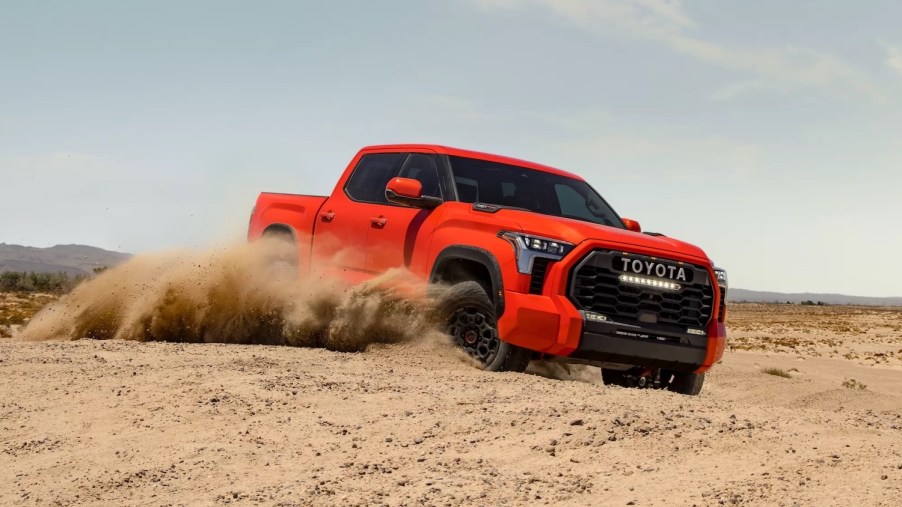
2022 Toyota Tundra: Twin-Turbo Engine Problems
If there is one thing you can rely on Toyota for, it’s good quality and very reliable transportation. It is the hallmark of being Toyota. But owners are saying there have been issues with its all-new full-size Tundra. And even the 3.5-liter V6, first found in Toyotas in 2009, is seeing problems. What’s going on? Has the fallout from the pandemic done this?
Probably no one will ever know. But let’s look at the main issue that has concerned 2022 Tundra truck owners. It has to do with turbocharger problems. Specifically, the actuators in the wastegates of the turbos.
What is the problem with the 2022 Tundra twin-turbo engine?

Turbocharger wastegates control how much exhaust gets to the turbo’s impeller. The more the wastegate allows, the more the turbo spins, increasing power. But if the wastegate allows too much exhaust, which adds pressure, to the turbo, it will eventually fail. That’s partly due to the increased heat and pressure.
So the wastegate acts as a pressure valve. It regulates the amount of exhaust that gets to the turbos. And on Tundra engines, it is controlled electrically, by an actuator. It is these actuators that are failing. And when they fail they close, so that there is no regulation of exhaust pressure.
So replacing the turbo or turbos is easy, but the labor involved will choke you. When it first happens, owners see an error or check engine light. When this happens, the engine reduces power so that nothing gets damaged. Checking the codes, dealers are finding the problem is wastegates not operating properly.
Why must the Tundra turbochargers be replaced?

The problems arise because first, the actuator and wastegate are packaged with the turbocharger itself. So the entire turbocharger has to be replaced, not just the wastegate. But the bigger problem is access. The turbos are located at the rear of the engine, with access almost impossible.
Tundra cabs must be separated from the chassis in order to access the turbos, which is a major operation. Or, the entire front clip needs to be removed, according to Pickup Truck Talk. That’s the hood, front fenders, grille, bumper, inner fenders, and associated components.
This is why it could become costly down the road. Right now, being new trucks, this is all covered under the warranty. But there is still another problem associated with this.
Besides the turbocharger issue, is there more going on?
Auto components are in short supply, and being brand new, all the turbos available are being stuck to new trucks at the factory. So replacement turbos take time for the dealers to receive. That means these Tundra trucks might have to sit in dealer lots for days or weeks until parts arrive. And that is a direct result of the pandemic, as all manufacturers are seeing supply issues.
The good news is that this isn’t a safety issue. Putting the truck into limp mode when this does happen keeps things safe. And the other good news is that we’re sure Toyota engineers have determined the specific problem with the actuators and have corrected it.
To be on the safe side, you might want to wait a bit to see how this issue evolves. Or if you can hold off until the 2023 Tundras come out, possible other kinks with the truck’s first years will have been addressed, should there have been any.



